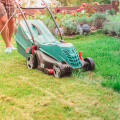Spring is the most critical season for lawn care, as it sets the stage for a healthy and lush lawn throughout the year. With the right maintenance steps, homeowners can revitalize their lawns and prepare them for the growing season ahead. Several essential tasks need to be carried out to ensure that the grass not only recovers from winter but thrives during spring and summer.
Aeration and Soil Preparation
One of the first steps in spring lawn care is aeration. Over the winter months, the soil can become compacted due to snow and foot traffic, which restricts the flow of water, nutrients, and oxygen to the grass roots. Aerating the lawn helps loosen the soil, creating pathways for these essential elements to reach the roots and promote healthy growth. A core aerator can be used to remove small plugs of soil from the ground, allowing the lawn to breathe and absorb nutrients more effectively. If the soil is particularly dense or compacted, it may also be beneficial to incorporate a light layer of compost or organic matter to improve its structure and nutrient content.
Fertilization for Growth
After aeration, the next crucial step is fertilizing the lawn. Spring fertilization provides the necessary nutrients that the grass needs to grow thick and green. A balanced fertilizer with the right ratio of nitrogen, phosphorus, and potassium can encourage vigorous growth and help the lawn recover from the stress of winter. It’s important to choose a slow-release fertilizer that will feed the lawn consistently over several weeks, ensuring that the grass receives a steady supply of nutrients without the risk of burning. Applying fertilizer at the right time—typically when the soil temperature reaches about 55 degrees Fahrenheit—ensures the lawn is ready to absorb these nutrients as it starts to grow.
Seeding Bare Spots
Spring is also the perfect time to address any bare or thin patches in the lawn. Overseeding these areas helps fill in gaps and promotes a uniform, thick lawn. Choosing the right type of grass seed that matches the existing lawn and the region's climate is crucial for successful growth. Before seeding, it’s essential to prepare the soil by loosening it and adding a light layer of topsoil or compost. After spreading the seeds, watering the area regularly and keeping the soil moist ensures proper germination. Overseeding not only improves the lawn's appearance but also helps create a denser turf that can naturally resist weeds and pests.
Weed Control
Weed control is a vital aspect of spring lawn care. Weeds like dandelions and crabgrass often begin to emerge as temperatures rise, and taking early action can prevent them from spreading. Applying a pre-emergent herbicide in the early spring is an effective way to stop weed seeds from germinating. It’s important to select a product that targets specific types of weeds common in the area without harming the grass. If weeds have already appeared, spot treatments with post-emergent herbicides can be used to eliminate them. Consistent monitoring and control help maintain a healthy lawn, as a dense and well-maintained turf is less likely to be invaded by weeds.
Watering Strategy
Proper watering is essential during the spring, as it sets the foundation for a resilient lawn during the warmer months. While rainfall often provides sufficient moisture in spring, it’s important to monitor weather conditions and supplement with additional watering if needed. Early morning watering is recommended, as it allows the grass to absorb moisture before the heat of the day and reduces the risk of fungal diseases. It’s also crucial to avoid overwatering, as this can lead to shallow root growth and increase the lawn's susceptibility to drought and disease. Implementing a deep watering routine that encourages roots to grow deep into the soil helps create a more drought-tolerant and robust lawn.
Mowing and Lawn Maintenance
Spring mowing practices differ from those in summer. As the grass begins to grow, it’s important to mow the lawn at a higher setting to avoid stressing it too early in the season. Gradually lowering the mower height over a few weeks allows the grass to adjust and become denser. Regular mowing encourages lateral growth, which helps the lawn become thicker and more resistant to weeds. It’s also essential to keep mower blades sharp to ensure clean cuts that do not damage the grass. Additionally, leaving clippings on the lawn acts as a natural mulch, returning nutrients to the soil and promoting healthier growth.
Professional Assistance and Structural Support
For homeowners looking to enhance their lawn care routine or manage challenging issues like soil compaction, consulting with a professional lawn care service can be beneficial. Professionals have the expertise to diagnose specific problems and recommend customized solutions tailored to the lawn’s needs. Additionally, when dealing with properties that require additional structural support or drainage solutions, partnering with experts such as J&J Roofing & Construction can help address these issues efficiently. They can provide valuable assistance with structural elements that may impact lawn care, such as ensuring proper water flow and preventing erosion around the property. By working with professionals, homeowners can achieve optimal results, ensuring their lawn remains vibrant and healthy throughout the year.
Long-Term Maintenance
Once the initial spring tasks are completed, ongoing maintenance is key to sustaining a healthy lawn. Regular mowing, watering, and monitoring for weeds and pests should be part of a consistent lawn care routine. Soil testing is also recommended every few years to monitor pH levels and nutrient availability, allowing for targeted fertilization when necessary. Incorporating organic mulch and compost into the soil helps maintain its health and structure, ensuring it supports the lawn’s growth year after year. By taking proactive steps each spring and investing in long-term maintenance strategies, homeowners can enjoy a lush, green lawn that enhances the beauty and value of their property.






